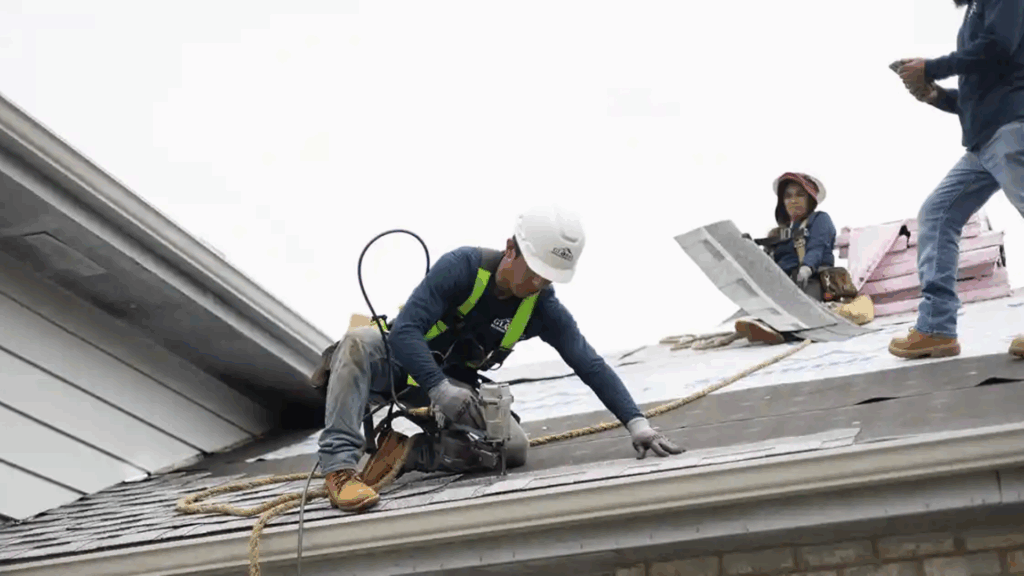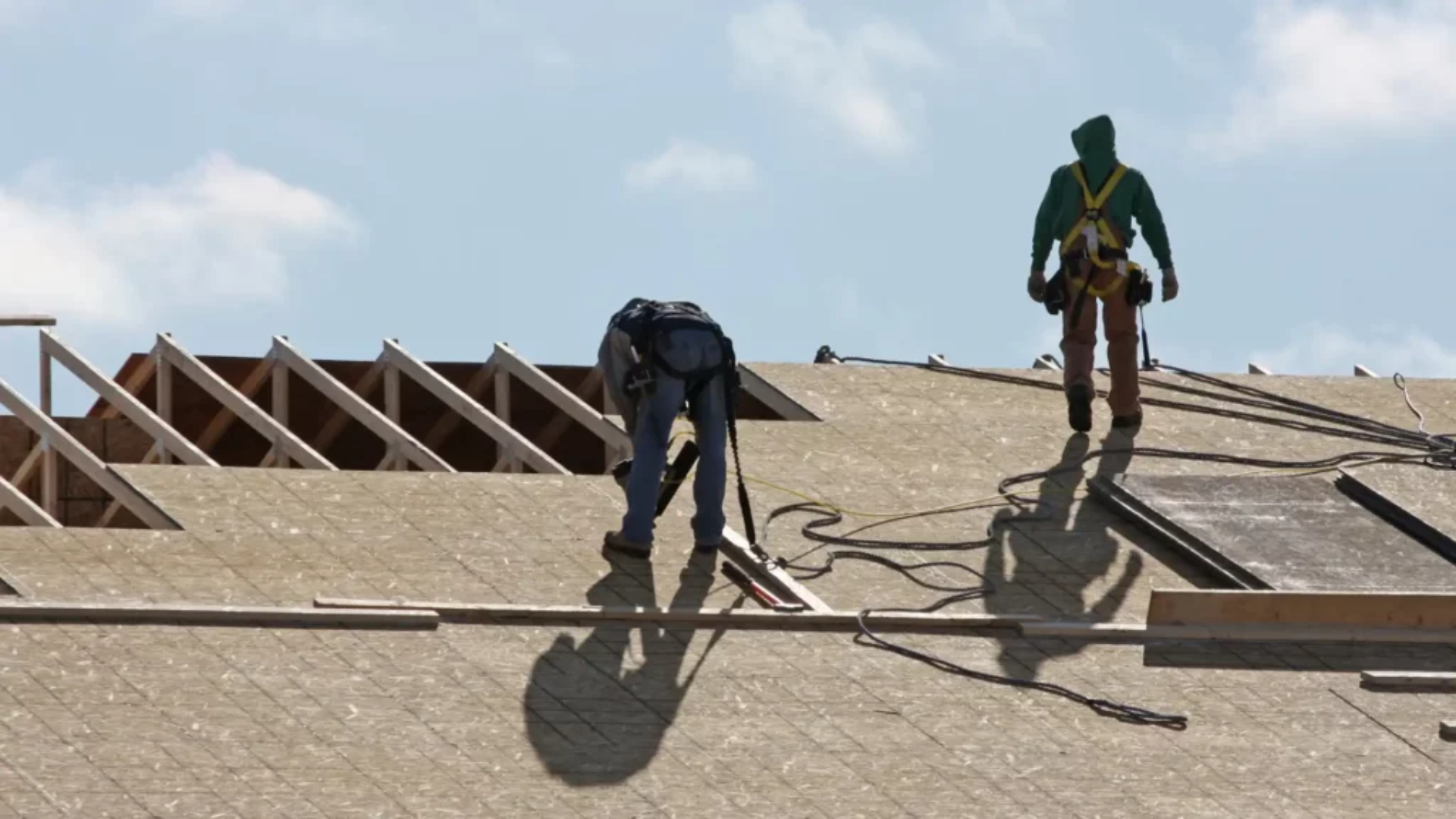Replacing a roof can feel like a heavy financial burden, but what many don’t realize is that insurance might be able to help cover the cost if your roof is damaged.
I’ve been through this process myself, and I can tell you firsthand that while it can seem complicated and overwhelming, it’s entirely possible to navigate it successfully.
From reviewing your policy to negotiating with your insurance provider, I’ve learned a lot along the way.
In this post, I’ll share my personal experience and guide you through the steps that helped me get the insurance coverage I needed to replace my roof without breaking the bank.
Understanding Roof Replacement and Insurance Coverage
Before you start the claims process, it’s essential to understand how insurance handles roof replacements.
Generally, insurance covers roof damage caused by specific events like hail, wind, or fire. However, not all types of damage may be covered, so it’s important to review the details of your policy.
Some insurance companies may only cover certain causes of damage, leaving you with out-of-pocket costs if the damage falls outside of those parameters.
Additionally, many insurers apply depreciation based on the age of your roof.
This means that if your roof is old, the insurance payout may be reduced to reflect its depreciated value rather than the full cost of a replacement.
To avoid surprises, take the time to carefully read your policy and understand the coverage limitations before filing a claim.
Steps to Get Insurance to Pay for Roof Replacement

These steps will guide you through the process of filing a claim, from reviewing your policy to appealing a denial, ensuring you take the right actions to get your roof replaced.
Step 1: Review Your Insurance Policy
Carefully review your insurance policy to understand the coverage for roof damage. Some policies may cover full roof replacement costs, while others may only cover repairs or a partial replacement.
Be sure to check for any exclusions or limitations regarding roof damage from specific causes like wear and tear, age, or maintenance issues.
Step 2: Document the Damage
Documenting the damage to your roof is essential for supporting your claim. Take clear, high-quality photos and videos of all visible damage.
If the damage is not immediately noticeable, hire a professional roofer to conduct an inspection.
Proper documentation helps build a strong case, ensuring the insurance company can assess the full extent of the damage.
Step 3: Call Your Insurance Company
Once you’ve reviewed your policy and documented the damage, the next step is to contact your insurance company. Call them as soon as possible to report the roof damage and begin the claims process.
Having clear documentation ready when you contact them will make the process smoother and help ensure that the claim is handled promptly.
Step 4: Be Prepared for the Adjuster’s Visit
When the insurance adjuster visits your property, they will assess the damage to determine if it meets the criteria for a covered claim.
Be prepared by having all your documentation organized and ready to present. This includes photos, videos, and any reports from roofing professionals.
Answer all questions thoroughly to ensure the adjuster understands the full extent of the damage.
Step 5: Understand the Adjuster’s Report
After the adjuster visits your property, they will send a report that outlines the damage assessment and an estimate of the repair or replacement costs.
Review this report carefully to make sure it accurately reflects the damage. If there are discrepancies or you feel the estimate is too low, you have the right to request a second opinion or dispute the findings.
Step 6: Get Multiple Quotes for Roof Replacement
To help your claim process, it’s a good idea to get multiple quotes from reputable roofing contractors.
These quotes will provide a range of costs for the replacement and can give you leverage when negotiating with your insurance company.
It ensures that you’re not being offered less than the actual cost required to replace your roof.
Step 7: File the Claim Properly
When filing your claim, make sure all necessary documents are included. This should include photos, the adjuster’s report, and quotes from roofing contractors.
Verify that all required paperwork is submitted correctly to avoid delays.
Keep in touch with your insurance company to confirm that the claim is progressing smoothly and to avoid potential issues later.
Step 8: Work with a Public Adjuster
If your insurance company’s assessment doesn’t reflect the full replacement cost or you feel the settlement is unfair, a public adjuster can help.
A public adjuster works on your behalf to negotiate a fair settlement with the insurance company. Hiring one can help if the process is slow or if you’re not satisfied with your insurance company’s offer.
Step 9: Be Prepared for Depreciation
If your roof is older, be prepared for depreciation to be applied to your insurance claim.
Insurance companies may only pay the actual cash value (ACV) of your roof instead of the full replacement cost.
In such cases, you can challenge the depreciation amount or negotiate a higher payout based on your roof’s actual remaining value.
Step 10: Appeal if Necessary
If your claim is denied or the payout is too low, you have the right to appeal the decision. Review the reasons for the denial and gather additional supporting documentation to strengthen your case.
Once you have the necessary information, submit your appeal and follow up regularly to ensure your claim is reconsidered for a fair payout.
What to Do If Your Claim Is Denied?
If your insurance claim is denied, it’s important to approach the situation calmly and systematically.
- Review the Denial Letter: Understand the specific reasons for the rejection.
- Address Missing Documentation: Gather any additional evidence needed.
- Clarify Misunderstandings: Contact the insurance company to resolve issues.
- Seek Professional Help: Consult a public adjuster or attorney if necessary.
Getting Professional Help: Should You Hire an Attorney?
In some cases, hiring an attorney can be a critical step in the claims process, especially when facing complex or contested roof replacement claims.
While not every situation requires legal help, many homeowners have found that working with a lawyer can be a game-changer when insurers refuse to provide a fair payout.
If you feel that the insurance company is not offering a reasonable settlement or has denied your claim without sufficient explanation, consulting an attorney might be the best course of action.
A lawyer specializing in insurance claims can help you understand your rights, negotiate with the insurer, and guide you through the legal complexities.
If your claim escalates into a dispute or lawsuit, having legal representation ensures you have the best possible chance of securing a fair resolution.
Homeowner Tips for Roof Replacement Insurance Claims
These tips, shared by homeowners on forums, offer practical advice to help navigate the complexities of roof replacement insurance claims and ensure a fair payout.
- Know Your Roof’s Value: Understanding your roof’s condition and consulting a contractor can help avoid lowball offers from insurance companies, especially if depreciation applies.
- Stay Organized with Documentation: Keeping thorough records of all communications and official documents is crucial for tracking your claim and resolving issues.
- Understand the “Replacement Cost” Clause: Ensure you understand your policy’s “replacement cost” clause to know how much the insurance will cover for roof replacement, minus the deductible.
- Leverage the Contractor’s Expertise: Working with contractors who specialize in insurance claims can improve your chances of getting a fair settlement.
- Challenge Initial Denials or Low Payouts: Don’t accept an initial denial or low payout; homeowners often have success by questioning and appealing the insurance decision.
- Seek Help from a Roofing Attorney: If the claims process becomes complicated, consulting a roofing attorney can help you navigate disputes and secure a better settlement.
- Look into Claims for Wind and Hail Damage: Check with your insurance to see if wind or hail damage qualifies for coverage, as these events are often included but harder to prove.
Conclusion
Filing a roof replacement claim can be a daunting process, but with the right approach, it doesn’t have to be overwhelming.
From understanding your policy to documenting the damage and avoiding common mistakes, staying organized and proactive can help you secure a fair settlement.
I’ve learned firsthand that communication is key, keeping detailed records, and following up with your insurance company can prevent unnecessary delays.
If things aren’t going as planned, don’t hesitate to seek professional help, like a public adjuster or an attorney. Remember, you have the right to ensure your claim is handled fairly.
If you’re dealing with roof damage and the insurance process feels complicated, I encourage you to take these steps to protect your interests and get the coverage you deserve.

